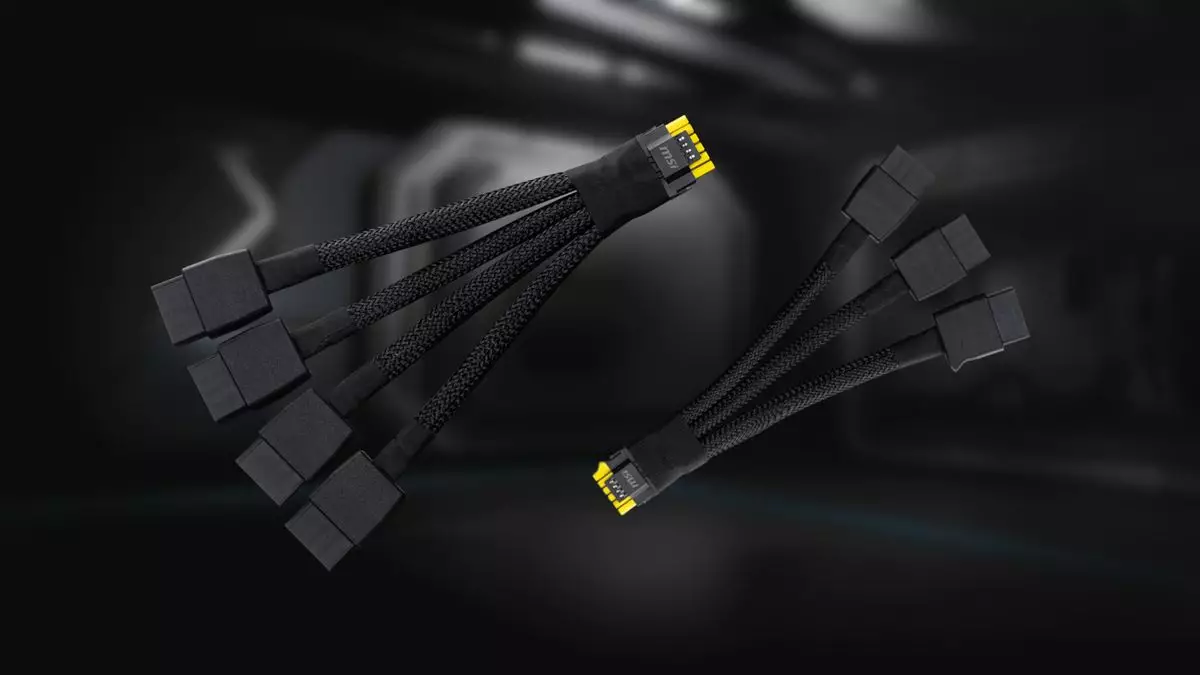The introduction of the RTX 50-series graphics cards has created a buzz in the tech community, particularly concerning their power requirements and the infamous connector issues previously seen in the RTX 4090. Understanding the underlying problems that plagued earlier models can provide crucial insight into why the latest offerings from manufacturers, such as MSI, are shifting towards more reliable power solutions.
The RTX 4090 was celebrated for its groundbreaking performance, yet it faced dramatic backlash due to its propensity for power connector issues. Users reported instances of power cables melting, which resulted from a cocktail of design flaws and poor-quality adapters. The primary culprit was the 12VHPWR connector; it was challenging for users to ascertain whether the cable had been fully inserted, leading to dangerous electrical conditions. As the graphics card industry pushes for more power-intensive designs, such as the RTX 5090, there are understandable apprehensions regarding a repeat of these issues.
The transition to the RTX 50-series represents an evolution in design philosophy, encapsulated in the new 12V-2×6 connector. This revised model incorporates modified pin lengths to guarantee that full power is only drawn when the cable is completely seated. This advancement reduces the risk of overheating and melting, addressing the primary concerns that users had with earlier models. Beyond just a slight redesign, the shift acknowledges the growing power demands—some RTX 50-series cards will require up to 150W more power than their predecessors.
In an effort to eliminate ambiguity surrounding cable connections, MSI has implemented an innovative power connector system in its new Blackwell series GPUs, specifically designed to cater to the needs of high-performance gaming cards like the RTX 5090, RTX 5080, and RTX 5070 Ti. The critical feature here is a bright yellow plastic warning system integrated into the adapter cables, which connects 8-pin sockets to the revised 12V-2×6 interface. Should any portion of the yellow plastic remain visible post-connection, users are alerted that the cable has not been seated properly, reducing the chances of technical malfunctions.
Power consumption levels are skyrocketing among the newer graphics cards, with the RTX 5090 boasting a staggering 575W total graphics power (TGP). The heightened demand for energy raises legitimate concerns about safety and handling of excessive current, particularly with such compact connectors. Although MSI’s preventive design measures—like the visible warning system for correct installation—offer a considerable layer of protection, they have not completely assuaged the fears of users who recall the melting fiasco of the RTX 4090.
There is a growing recognition that the responsibility for ensuring safe and reliable connectivity in graphics cards lies not only with manufacturers but also with users. As newer technologies are adopted and integrated, it remains essential for consumers to understand and implement proper installation techniques, particularly as more power-hungry components enter the market. This reality calls for a balanced partnership between the manufacturers’ innovation and the user’s proactive engagement in maintaining electrical safety.
The RTX 50-series marks a significant step forward in addressing the deficiencies observed in the RTX 4090. With innovations in connector design, incorporated features that enhance user awareness, and a deeper understanding of power requirements, both manufacturers and users can move toward a safer future. However, as the tech landscape continues to change and grow, persistent vigilance will be critical to ensure that history does not repeat itself. The combination of thoughtful design and informed usage will be the key to unlocking the full potential of these cutting-edge graphics cards without the shadows of past failures.

